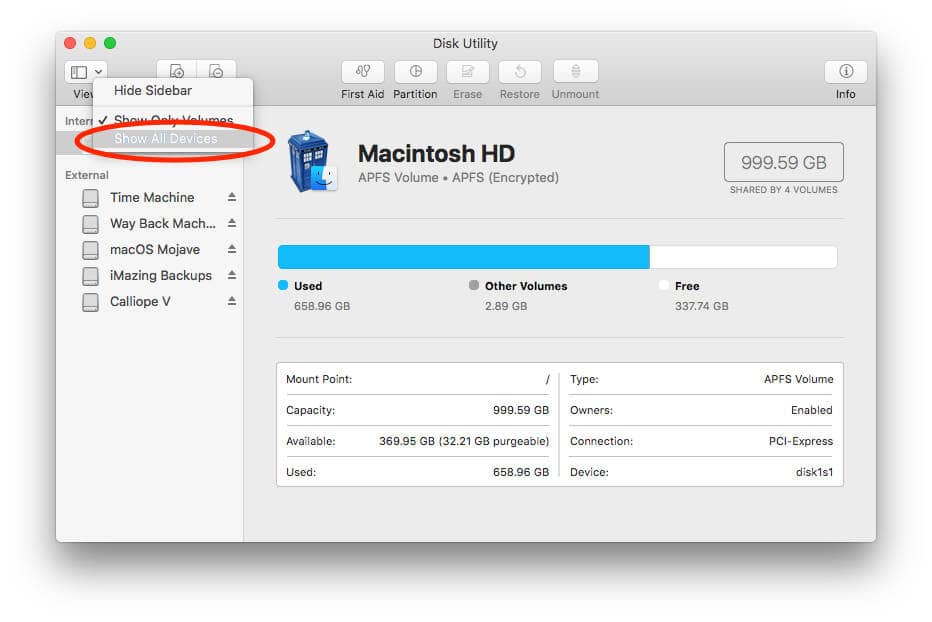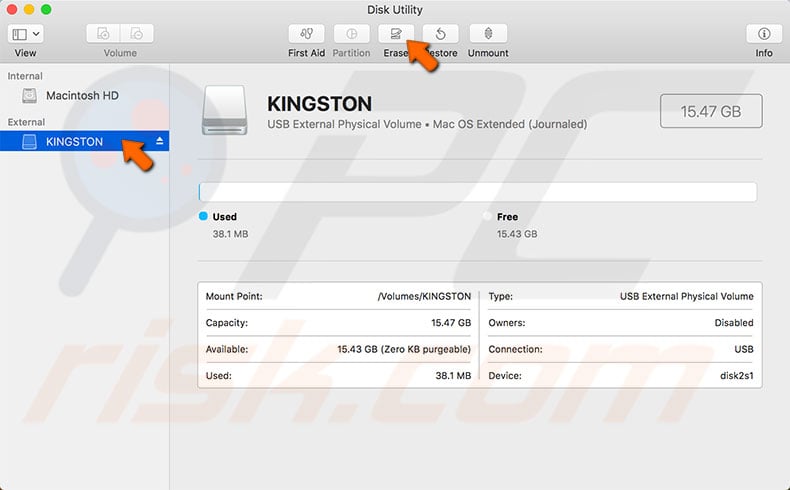EaseUS Partition Master Home Edition. If you need to manage partitions, copy partitions or even. Whether you want to optimize your system's productivity or your own, utilities should be in your toolbox. Update your OS, clear out junk files on your laptop, back up or compress files, speed up. Connect the cable from the Western Digital external hard drive to the USB port of the Mac computer. Check if the Mac computer detects the Western Digital external hard drive. Go to the Applications folder and then open the Utilities folder. Search for the Disk Utility program and then double-click it to open. How to format FAT32 drive on Mac Step 1. Now here is how to format your FAT32 external drive on Mac. Go finder window on you Mac then click on Applications the image right. From there, you need to open disk utility. Therefore, scroll down until you see a folder Utilities Double click on it. For Windows, it offers quick format feature when you right-click the hard drive on the computer. If you are using a Mac, you can run the built-in Disk Utility to quickly format a hard drive or external hard drive under Mac OS. However, the formatted data can be recovered by data recovery software.
May 06,2020 • Filed to: Mac Recovery • Proven solutions
'Is it possible to format FAT32 and NTFS drives on Mac by myself?' A user asked us about this question.
Certainly you can format the drives yourself by directly setting in the 'Application' on Mac. Many people think it is hard to format the windows drive on Macintosh. No worry, actually it is not impossible to realize it no matter you use an external or internal drive of your windows system. We here will show you the full guides on how to format FAT32 and NTFS drives on Mac as an example.
Part 1: Format FAT32 Drive on Mac
First, let us look on how to format FAT32 drive on Mac (macOS Sierra). You could be wondering what FAT32 is. It is a file system in Windows 95, 98, and windows Millennium Edition.
One major advantage about this file system is that nearly all the operating systems can read and write from it. On the contrary, it just accommodates files less than 4GB. So if you have a drive that you want to format ensure it is smaller size. Nevertheless, if you have a drive that is more than 4GB, you can download software known as Swissknife. After installing it, it will be much easier to format large files.
How to format FAT32 drive on Mac
Step 1. Now here is how to format your FAT32 external drive on Mac. Go finder window on you Mac then click on Applications the image right.
Step 2. From there, you need to open disk utility. Therefore, scroll down until you see a folder Utilities Double click on it.
Step 3. What you have to do is scroll down through the icons until you find an icon labelled Disk Utility again double click on it.
Step 4. When it opens at the centre, it will command you to select a disk, volume, image that you want to format.
Step 5. From there, you need to open disk utility. Therefore, scroll down until you see a folder Utilities Double click on it.
Step 6. Move the cursor to the top left and choose the disk you want to format. To achieve this you have to double click on your external drive and click the Erase icon, which is at the top of your Mac screen. After doing so, a command dialog box will be displayed that give you options of formatting your drive.

Step 7. Your problem is almost getting a solution if you still keeping track to these steps. Next, go to Format at the centre of the screen and select MS-DOS (Fat) file format system that allows compatibility with your windows drive.
Below that, you will see Name this allows you to change the name of your external drive if you wish to. From there, click Erase at the bottom of the screen. Immediately you will get a warning but go ahead and click, Erase.
When you here just relax and wait until the process is over before you remove the drive. When reformatting process is over your drive will beFAT32 and you can now use it.
Part 2: Format NTFS Drive on Mac
Canon Utilities For Mac
The second task is how to format NTFS drive on Mac. NTFS is built for windows operating system therefore it is not supported by Mac. For this case, it is advisable to install programs called NTFS 3G, which works in, handy with MacFuse. Both of these are first installed in the computer. It is easier and faster to install despite having using some cash to purchase these NTFS apps such as Tuxera or Paragon NTFS. When both are installed to the PC, they will enable the user to read and write on the drive that is after following these steps.
How to format NTFS drive on Mac
Step 1. Follow the similar procedure that is used in formatting the FAT32 above. Go to finder window in your Mac, and then click on Applications at the left hand side of your screen.
Step 2. Then double click on Utilities icon, which will appear at the screen along other applications you have installed in your computer.
Next, click on Disk Utility. As the NTFS 3G is free program most users have noted bugs despite of its success. Since you had inserted your external drive, hence it will pop up at the top right of your screen. Select that drive you want to format by first choosing the NTFS 3G format that will be displayed. You can also opt to rename your drive if you wish. Once again at the bottom of your screen to the right you will see Erase option. Click it. A warning will be displayed to you that require you simply click Erase .Be patient as the drive is formatted when it is done you are good to go. You can now read and copy paste items on your drive. Another alternative to Tuxera is Paragon NTFS. This program gives a user a room for modification and deletion of items on windows NTFS. As you have seen the NTFS formatted drives should not worry since you have a way out.
You may have encountered a case where you insert an external drive in your Mac and you cannot copy items on your Mac but you can read them. It is because your drive is using the NTFS windows system. Therefore, this leads to our third point of discussion on how to format any drive on your Mac. Disk utility is the vital application in Apple product. It makes the Mac world to be easy and interesting to use as it removes the obstacles between NTFS and HFS+. As usual, insert the drive let us say the hard disk or USB drive.
Step 3. In the finder window click Applications, go to Utilities, scroll down the screen and double click on Disk Utility. Click on the drive that you want to format. At the centre, you click on the icon Erase. A dialog box will be seen at the bottom of it with a round four commands. Select an option in which you want to format your drive. For instance, if you select an option MS DOS FAT, it will well suit with windows as well as Mac. On the other hand, if you choose MAC OS Extended (Journaled) your drive will only harmonize with Mac.
Anyway, that is not the case since everyone has his or her own preferences. Whichever option you want to choose you will still format your drive to suit your desires. From there, you click Erase and upon completion of that process, your drive will be formatted successfully.
Recoverit for Mac
A Life Saver to Solve Your Data Loss Problems!
- This fabulous program can help you recover lost files like photos, videos, emails, and many other 550+ types of file.
- It supports recovering data from a wide range of devices, such as computers, external hard drives, USB drives, etc.
- It is easy to use. You only need to take three simple steps.
- It supports the newest Mac system macOS High Sierra now.
WARNING: Formatting will erase all data on the device. Back up all your data before proceeding.
Instructions below are for 10.11.x (El Capitan) and 10.12.x (Sierra)
1. Double-click on Macintosh HD - or in the Finder menu clickFile > New Finder Window
2. Click the Applications folder - if using a Finder Window Applicationswill be in the left side menu.
3. Click the Utilities folder.
4. Double-click Disk Utility.
5. On the left side of the window are the drives connected to the computer. Select the capacity of the drive respective to the one containing the device you wish to format then click the Erase tab.
Example: If the drive is called 'NO NAME', directly above that, you should see the drive capacity of 'XXXX'. Select this capacity.
6. Verify Volume Format is set to MS-DOS file system or exFAT, Scheme is set to “Master Boot Record” (Do NOT select GUID Partition Map) then click Erase.
Instructions below are for 10.13.x (High Sierra)
1. Open Disk Utility. Please See Answer 20985: How to access Disk Utility macOS
2. In the top menu bar, go to View, and choose Show All Devices
3. Select the upper level of the drive you would like to format and click the Erase button
4. Choose how you would like to format the drive
- Enter a Name for your drive
- Choose exFAT or MS-DOS (FAT) for the format
- Choose Master Boot Record for the Scheme
- Click Erase
5. When finished, the drive will be formatted and repartitioned successfully. Click the Done button

NOTE: exFAT is used on SDXC card (64GB and higher).
NOTE: exFAT can be used on flash drives or memory cards to transfer files larger than 4GB.
NOTE: MacOS 10.6.2 or higher is required for exFAT file system. Some older operating systems must have a patch installed before they can use the exFAT file system.
Format Utilities For Mac Windows 10
NOTE: If the above steps do NOT resolve the problem or if the lock switch is missing or broken, please back up your data and request a replacement using our online web form.
Norton Utilities For Mac
Related Articles:
Operating systems that support exFAT
Deleting files on a memory card using a Mac
Deleting files on a Cruzer USB flash drive using a Mac
